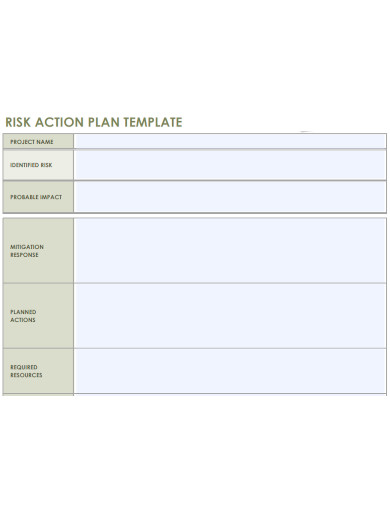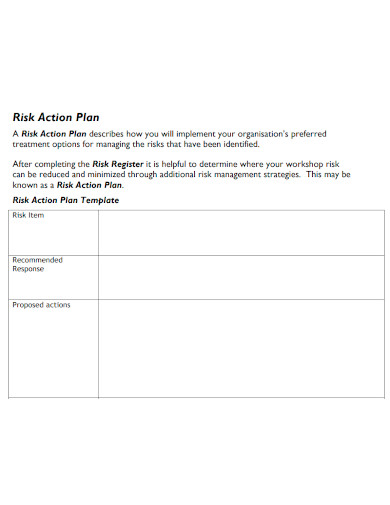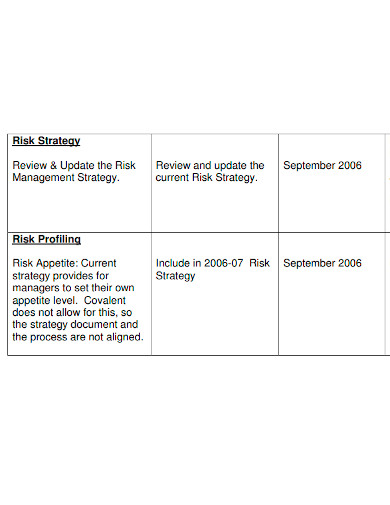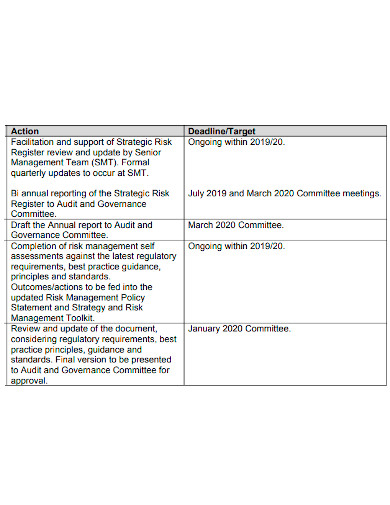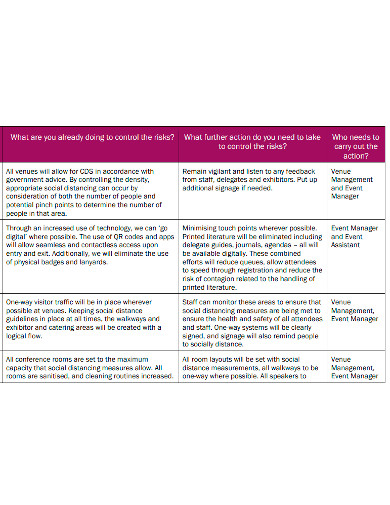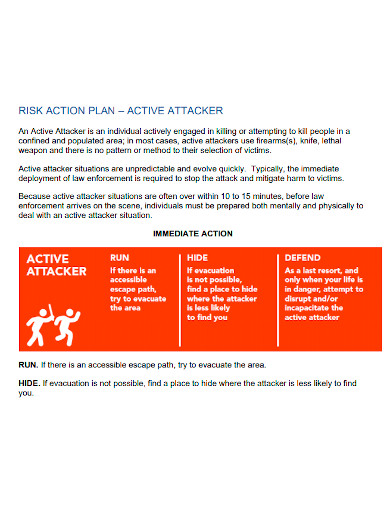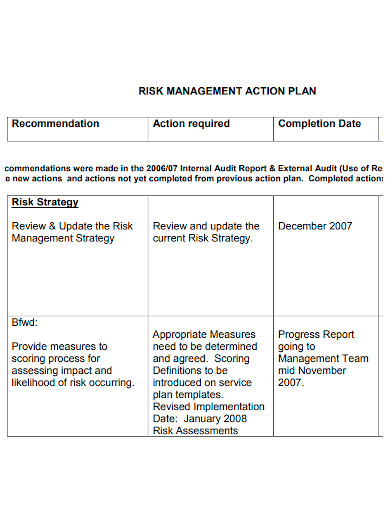When you are planning, you should always make sure that you are focused into it. When you fail, the project also fails. If you are a project manager, you are the only one who is expected to be knowledgeable about how to properly execute a particular plan accordingly compared to your members. You should have to be always on the positive side and think how a particular project can be executed smoothly. However, we cannot deny the fact that there are also risks that we may be able to encounter. That is why creating a risk action plan would help in minimizing the load and to have a full control over the management.
10+ Risk Action Plan Samples
1. Risk Action Plan Sample

2. Project Risk Action Plan
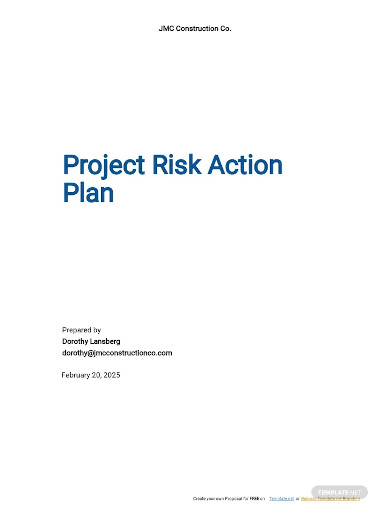
3. Risk Mitigation Action Plan
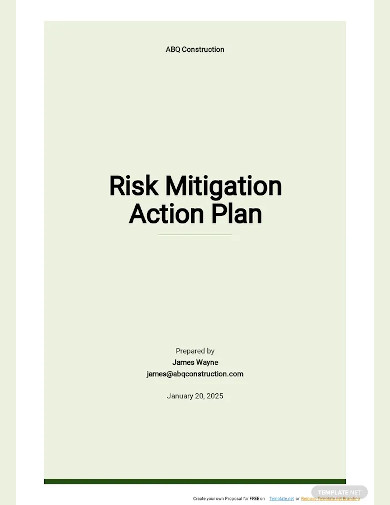
4. Risk Event Action Plan
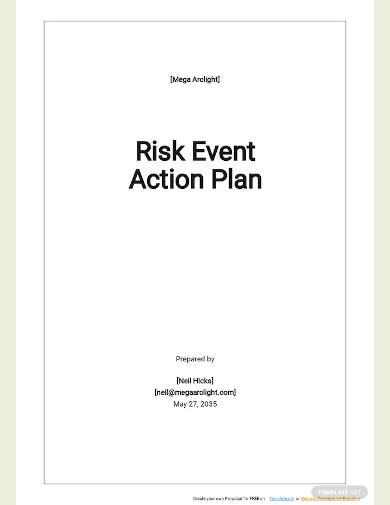
5. Printable Risk Action Plan
6. Editable Risk Action Plan
7. Standard Risk Action Plan
8. General Risk Management Action Plan
9. Formal Risk Action Plan
10. Professional Risk Action Plan
11. Basic Risk Management Action Plan
What is a Risk Action Plan?
A risk action plan is considered as a course of action in which an organization would use to address potential risks and the likelihood of these risks to occur. This is designed to make sure that the right actions are observed while providing a guide just in case something unexpected will happen. The main objective of a risk action plan is to help you prepare yourself and your organization on how to manage the risks as part of the business scenario. This may even provide an avenue to discuss about the problems that may possibly occur and the strategies you need to take that are appropriate in minimizing those risks.
There are different types of risk action plan. These includes the risk avoidance plans and risk reduction plans. The risk avoidance plans aim to provide specific measures that aims to avoid the risk preventing each one of them from happening. The risk reduction plans aim to provide measures to reduce the chance of a risk to occur and to reduce the effect that might take place after the occurrence of the risk.
How to Set Controls to Measure a Risk?
In order to set controls successfully, you have to secure a documentation of the past risks and the things that has triggered them. To do this, you may categorize them before setting controls. Some items that are included in the basic categories are the project scope, project cost, project schedule and deliverables and the quality of the project. The question is “how would you create the controls?” Take note of these steps. You have to identify the risks and make a plan about it. Keep the documentation of the risk and identify each of their triggers. Do not forget to review the risks and re-analyze it. Determine who will be the one responsible for the risks and prepare a strategy that you can incorporate to minimize it.
After the controls are set, choose what could be the best technique that you can use to eliminate the risk. Risk strategies should be applied if in case that the risks are already been triggered. The controls that you have included in the risk action plan provides a number of strategies suited for the elimination of the risks.
FAQs
Where does a risk action plan fit into the risk management process?
The risk action plan would often comes in the middle of the risk management process and risk evaluation.
How would a risk action plan impact on managing organizational risk?
Risk management plans helps in identifying specific measures to reduce risk. If these measures are followed correctly, they would have a huge positive impact on the process of risk reduction.
What are the steps in creating a risk management plan?
Conduct a risk analysis, evaluate each potential risk, assign responsibilities, think of the best strategy and contingency plan, measure risk threshold and monitor each of the risk.
Risk management occurs like a circle. It means that you are dealing with something that is unknown, so you have to keep it as a living document. Whoever owns the risk is the one who is responsible in updating and tracking on it just to make sure that everyone is fully aware about it. You may check out some of the risk action plan samples on the article.
Related Posts
FREE 9+ Sample Management Action Plan Templates
FREE 8+ Mutual Action Plan Samples
FREE 46+ Sample Action Plan Templates
FREE 30+ Action Plan Format Samples
FREE 12+ Construction Action Plan Samples
FREE 11+ Risk Management Report Samples
FREE 10+ Child Care Risk Management Plan Samples
FREE 10+ Management Work Plan Samples
FREE 9+ Sample Risk Management Implementation Plan Templates
FREE 5+ Forex Risk Management Samples
FREE 11+ Retail Risk Assessment Samples
FREE 10+ Audit Action Plan Samples
FREE 10+ Sample Incident Action Plan Templates
FREE 10+ Investment Risk Managements
FREE 9+ Sample Risk Management Plan Templates

